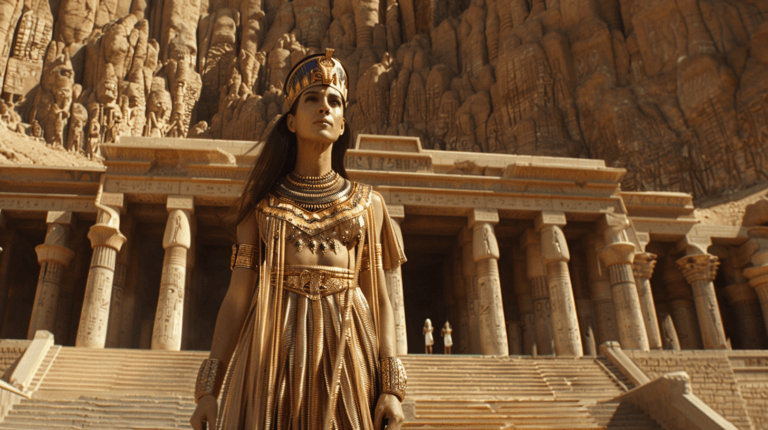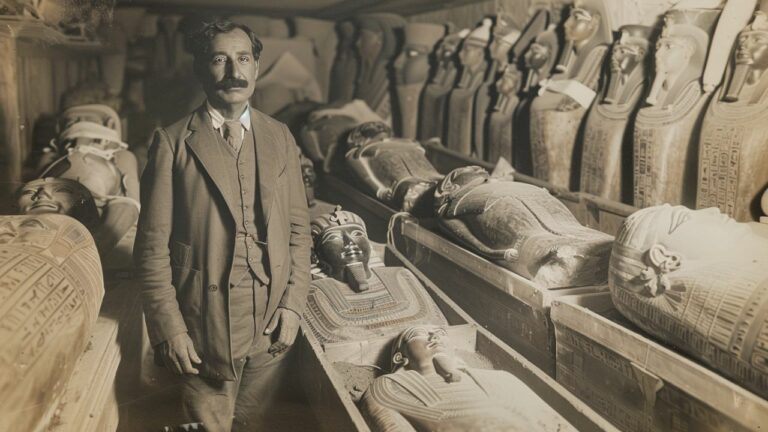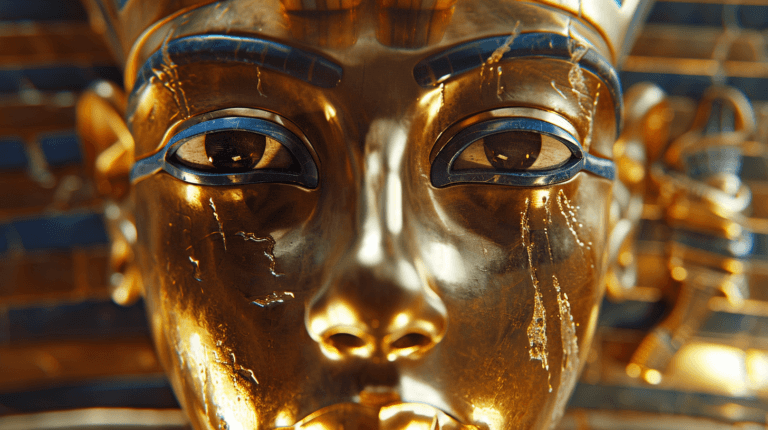Was Nefertiti a Pharaoh?
The legacy of Queen Nefertiti, renowned for her beauty and iconic bust, extends far beyond her striking image, but was Nefertiti a Pharaoh? A figure of immense importance during the reign of Pharaoh Akhenaten, a tantalizing question persists: did Nefertiti transcend the traditional role of queen and wield the ultimate power of a Pharaoh?
Nefertiti’s Influence Beyond the Traditional Role
Nefertiti’s prominence in ancient Egyptian society is undeniable. Unlike many royal consorts, her image is frequently found alongside Akhenaten in temples and artwork, signifying her unusual level of influence.
For example, at the Temple of Karnak, Nefertiti is depicted in equal size to Akhenaten, smiting the enemies of Egypt – a role traditionally reserved for the Pharaoh. Additionally, in the smaller temple at Amarna, the city she and Akhenaten founded, Nefertiti is shown independently leading religious rituals and even making offerings to the Aten, the sun god.
However, depictions of Nefertiti adorned with the Pharaoh’s crown and engaging in activities traditionally reserved for the ruler hint at the possibility of an even more elevated position. For instance, a limestone stela (an inscribed slab) found at Amarna shows Nefertiti wearing the distinctive blue crown associated with pharaohs and striking down enemies. Could she have ascended to the highest level of authority?

Evidence Supporting the Pharaoh Theory
The mysterious figure of Neferneferuaten, a ruler who emerges after Akhenaten’s death, fuels the theory of Nefertiti’s potential reign. Some Egyptologists propose that Neferneferuaten was Nefertiti herself, adopting a new name as she assumed greater power.
This belief is bolstered by the similarity of Neferneferuaten’s name to Nefertiti’s own. Neferneferuaten Ankhkheperure roughly translates to ‘Beautiful are the beauties of Aten, a beautiful woman has come’, building upon Nefertiti’s name which means ‘the beautiful one has come’.
This linguistic connection suggests a potential continuity of identity. Discoveries at Amarna, the city founded by Nefertiti and Akhenaten, including artifacts bearing her symbols of royalty and images portraying her in roles reserved for a Pharaoh, further strengthen the case for her ascension to the throne.

Arguments Against Nefertiti as Pharaoh
Despite the evidence, definitive proof of Nefertiti’s explicit use of a Pharaoh’s full titles remains elusive. Ancient Egypt’s history includes very few examples of sole female pharaohs, making scholars hesitant to embrace the idea of Nefertiti breaking this powerful tradition.
Alternative theories exist. Some historians argue that Neferneferuaten was a distinct person altogether, possibly a younger male coregent of Akhenaten. They posit that Nefertiti’s depictions with pharaoh-like imagery may have been symbolic representations of her influence rather than literal depictions of her status.
The Ongoing Debate
The question of Nefertiti’s true role continues to captivate scholars, with opinions deeply divided. While there is growing credence given to Nefertiti’s immense power and potentially a period of greater authority after Akhenaten’s death, conclusive evidence of her becoming a sole Pharaoh is yet to be discovered.
Unlike many royal consorts, her image is frequently found alongside Akhenaten in temples and artwork, signifying her unusual level of influence. For example, at the Temple of Karnak, Nefertiti is depicted in equal size to Akhenaten, smiting the enemies of Egypt – a role traditionally reserved for the Pharaoh. Additionally, in the smaller temple at Amarna, the city she and Akhenaten founded, Nefertiti is shown independently leading religious rituals and even making offerings to the Aten, the sun god.

Was Nefertiti a Pharaoh?
The debate surrounding Nefertiti’s potential reign is more than just an intriguing historical puzzle. It offers a valuable opportunity to reconsider our understanding of power dynamics in ancient Egypt. If this iconic queen could challenge societal norms enough to potentially share or even solely possess the authority of a Pharaoh, it suggests a more multifaceted social landscape than previously assumed. This perspective positions women in history as figures capable of holding significant positions of influence.
The search for definitive answers continues, fueled by ongoing archaeological discoveries. Perhaps one day, a newly unearthed inscription or a hidden tomb will definitively settle this captivating debate. Until then, Nefertiti’s reign serves as a powerful reminder that historical narratives are rarely straightforward, and even the most established figures can hold unexpected secrets.







